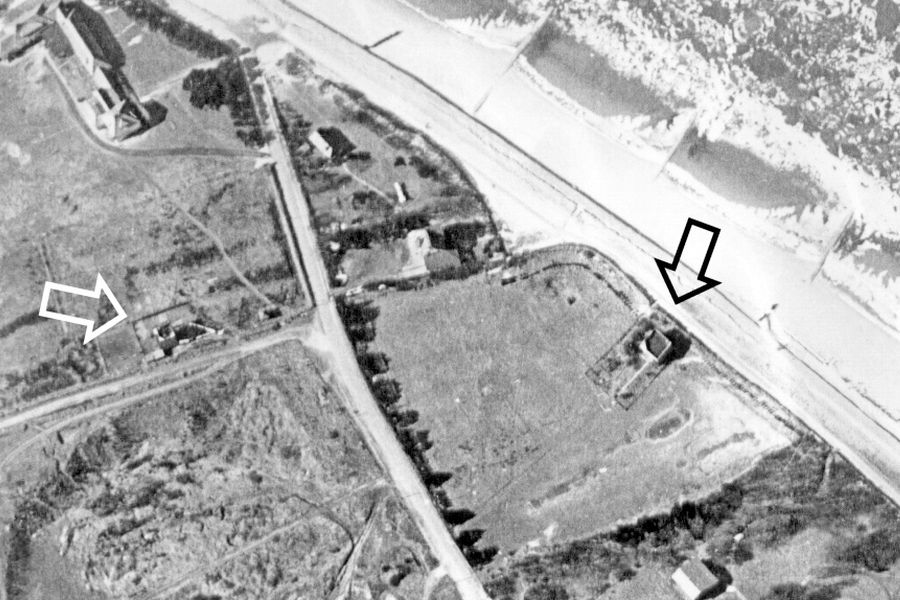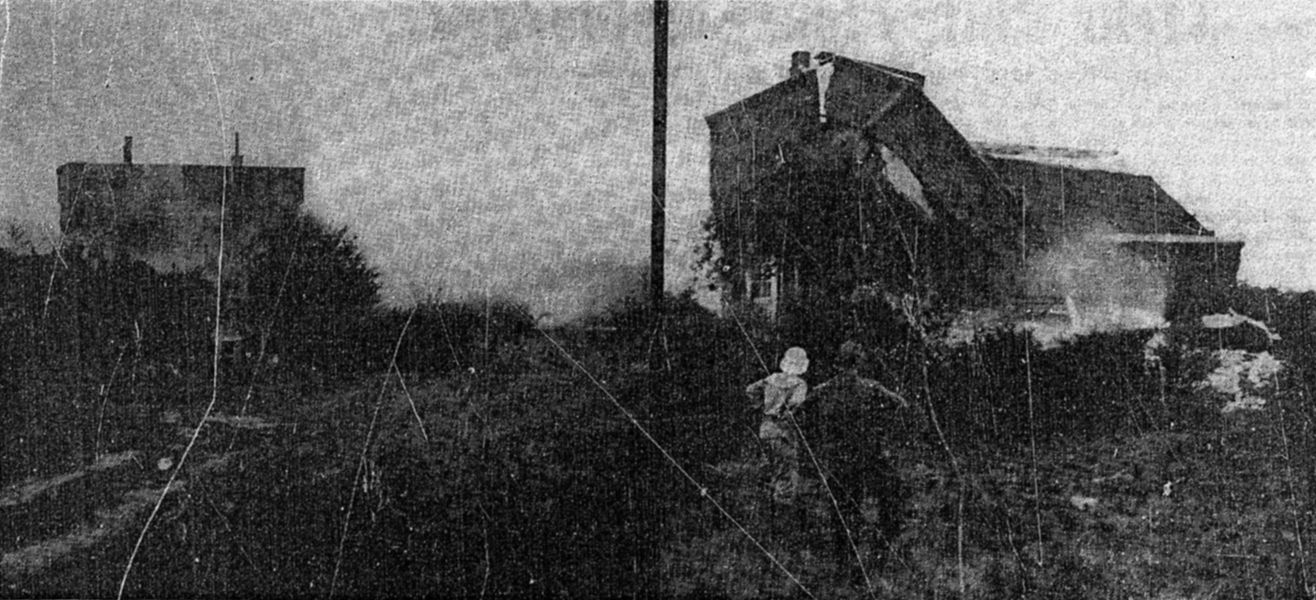
In the place of the current thermal pool of the Ahoi-Bad, there was probably a so-called searchlight tower based on the standard construction model FLA.77 before the start of the Second World War. The 150 cm high searchlight was positioned on top of the building built as a bunker. It was probably mounted on an elevator system with which it could be lowered down into the bunker when required. The power supply was provided by a 24 KVA generator, which was obviously located in the anti-aircraft tower 200 meters to the south and supplied it via a corresponding cable. During its time in the war, like the other positions, it was responsible for making approaching aircraft visible to the anti-aircraft guns with the light beam. Another incident occurred, however, when a badly damaged Heinkel He 111 from England made an emergency landing in front of the Görne Foundation. Here, searchlight 4 cast a trail of light on the mudflats, which the bomber used as a helpful line of sight and brought it safely to the ground. The incident on March 21, 1940, 00:22 is described in more detail under Shots/Crashes. After the war, the building was still inhabited by various families until it was demolished in 1968 as part of the planned development for the future seawater surf bath. Source: MB/Gerd Wildfang/ CZ

An aerial photograph after the war. The searchlight bunker (black arrow) was located directly on the edge of the dunes, just before the end of Wehrbergsweg. The building (white arrow) shows the 2 cm anti-aircraft bunker that still exists today, which served to protect the searchlight from low-flying aircraft. The Görne Foundation was located at the bottom right, and the still unforested sand pit at the bottom left. The former children's home, now Duhner Spitze, is at the top left.

Which: CZ

The demolition of the remaining bunker was probably not so easy due to the reinforcement. The first explosion did not immediately produce the expected success. In the background is the remains of the Görne Foundation building.
Which: CZ


